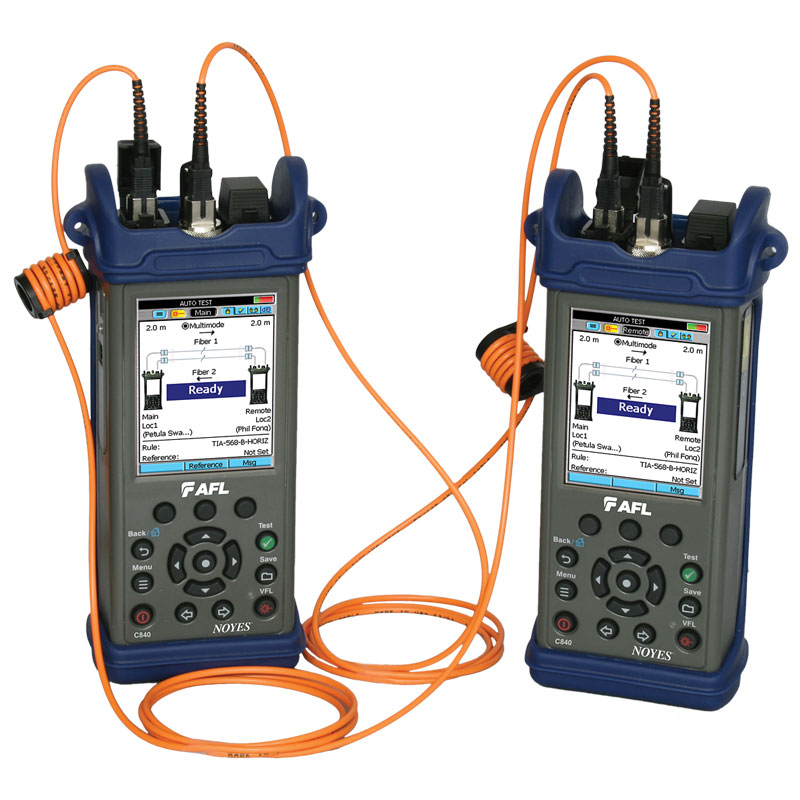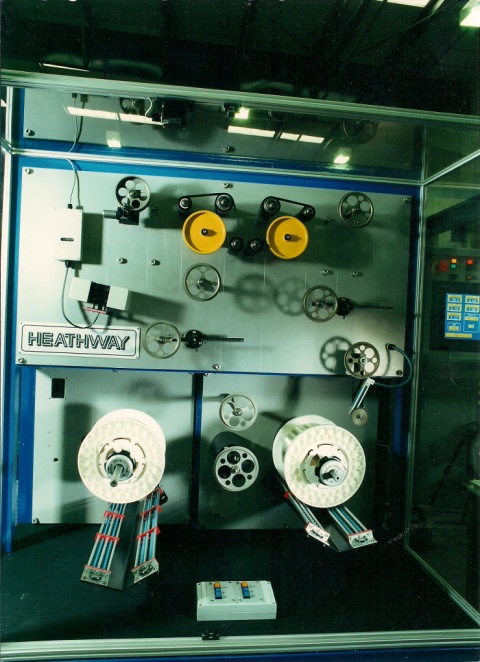How robotic vision improves accuracy and precision in industrial processes
Wiki Article
Comprehending How an Optical Measurement System Boosts Precision in Industrial Applications
Optical measurement systems play an important duty in improving accuracy across numerous industrial applications. By leveraging innovative technologies such as laser interferometry and 3D imaging sensing units, these systems provide high-resolution, non-contact dimensions. This capability lessens the risk of damaging sensitive parts while guaranteeing precision. However, the effect of these systems expands beyond simple dimensions. Discovering their advantages, applications, and future patterns discloses a complex landscape of advancement and challenges that qualities closer exam.The Basics of Optical Measurement Systems
Optical measurement systems work as crucial tools in different commercial applications, providing accurate information collection and evaluation. These systems utilize light as a primary ways of measurement, leveraging optical concepts to analyze dimensions, settings, and surface area characteristics of items. They include components such as lasers, video cameras, and sensing units, which work together to catch high-resolution photos and information.The technology enables non-contact measurements, lessening the threat of damaging delicate components. Optical measurement systems are versatile, finding utility in quality assurance, setting up verification, and dimensional analysis across various sectors. They are particularly effective in environments where standard measurement methods might fail, such as determining complicated geometries or observing fast motions.
As markets proceed to evolve, the integration of optical measurement systems will certainly continue to be critical for ensuring precision and performance, eventually improving product quality and functional performance in different manufacturing processes.
Trick Technologies Behind Optical Measurement
Secret innovations such as laser interferometry techniques and 3D imaging sensors play an essential duty in the performance of optical measurement systems (fibre testing equipment). These technologies enable specific measurements and comprehensive evaluation in different industrial applications. Recognizing their performances is vital for harnessing the complete capacity of optical measurement systemsLaser Interferometry Techniques
Countless laser interferometry methods have changed the field of optical measurement, offering unmatched accuracy and accuracy in various commercial applications. These techniques make use of the interference of systematic light waves to measure range, displacement, and surface area irregularities with nanometer-level accuracy. Typical approaches include Michelson interferometry, which splits a beam and analyzes stage changes, and Fabry-Pérot interferometry, known for its high resolution in gauging small adjustments. Additionally, laser Doppler interferometry utilizes regularity shifts to examine velocity, making it very useful in dynamic dimensions. The adaptability of these methods permits their integration into varied production processes, improving top quality control and guaranteeing adherence to rigid resistances. Consequently, laser interferometry remains to play an essential role beforehand commercial measurement criteria.3D Imaging Sensors
Advancements in measurement innovation have actually brought about the development of 3D imaging sensors, which play a considerable function in optical measurement systems. These sensing units record three-dimensional data through different methods such as triangulation, time-of-flight, and organized light. By properly rebuilding the form and measurements of objects, 3D imaging sensors enhance the precision of measurements in industrial applications. They offer real-time comments, assisting in quality assurance and making certain that components meet stringent specifications. Additionally, their ability to operate in challenging environments, such as varying lighting conditions, makes them important in manufacturing procedures. As sectors significantly embrace automation, the combination of 3D imaging sensing units into optical measurement systems is expected to drive further improvements in efficiency and precision.Benefits of Optical Measurement in Market
Standard measurement techniques have long been the criterion in commercial settings, optical measurement systems offer substantial benefits that enhance accuracy and effectiveness. These systems use light to capture information, leading to high-resolution measurements that are usually unattainable with traditional methods. The non-contact nature of optical dimensions decreases the risk of damaging delicate elements throughout the evaluation process. In addition, the speed of optical dimensions enables for rapid information acquisition, promoting prompt decision-making in fast-paced commercial environments.Optical systems are versatile, capable of gauging different products and shapes without the demand for comprehensive recalibration. This versatility adds to improved process and productivity. In addition, the automation potential of optical measurement systems decreases human error, making sure consistent quality assurance. Generally, the assimilation of optical measurement innovation stands for a progressive shift in the direction of enhanced accuracy and dependability in commercial operations, eventually bring about improved product high quality and functional efficiency.
Applications of Optical Measurement Systems

Optical measurement systems play an essential duty in enhancing manufacturing procedure optimization by giving precise data for decision-making. These systems ensure quality assurance guarantee via real-time tracking and evaluation of production metrics. As industries progressively embrace these modern technologies, their influence on efficiency and product dependability comes to be noticeable.
Manufacturing Process Optimization
Enhancing manufacturing process effectiveness is progressively dependent on the assimilation of optical measurement systems. These systems provide real-time data on various parameters, allowing manufacturers to analyze processes with a high degree of precision. By making it possible for precise measurements of measurements, surface qualities, and material residential or commercial properties, optical measurement systems help with the identification of inefficiencies and bottlenecks in assembly line. The instant comments from these systems equips engineers to make informed decisions, bring about maximized machining, setting up, and completing processes. The ability to monitor problems constantly allows for flexible modifications, reducing downtime and waste. As industries go for higher productivity and lowered functional costs, optical measurement systems become vital tools for boosting manufacturing process optimization.
High Quality Control Guarantee
The assimilation of optical measurement systems significantly influences top quality control assurance in industrial setups. These systems give precise and non-destructive measurements, allowing suppliers to spot flaws and inconsistencies early in the manufacturing process. By utilizing sophisticated imaging methods, such as laser triangulation and interferometry, optical measurement systems assure that parts meet strict specs. This assists in real-time surveillance, reducing waste and minimizing the risk of defective products getting to the marketplace. In addition, the information collected can be analyzed to refine production processes additionally, causing continual renovation. Inevitably, the fostering of optical measurement systems improves dependability and uniformity in high quality control, promoting higher confidence among stakeholders and customers alike in the end products supplied.Instance Researches: Effective Executions
Many sectors have actually effectively incorporated optical measurement systems to improve their operational effectiveness and product quality. For example, in the auto field, a noticeable supplier embraced a laser triangulation system to keep an eye on the positioning of car components. This implementation greatly reduced setting up errors, leading to boosted security and reduced prices.In the aerospace market, a leading aircraft maker used optical metrology for accuracy measurements of generator blades, optical fibre diameter analyser accomplishing a reduction in producing tolerances and much better performance criteria.
A customer electronic devices business implemented optical measurement innovation throughout the production of smart device screens, resulting in improved top quality control and a decrease in faulty items.
These study illustrate exactly how optical measurement systems not just improve accuracy however additionally contribute to general functional performance, demonstrating their value throughout numerous sectors. By attending to details needs, these systems have verified to be crucial tools in modern industrial applications.
Difficulties and Limitations of Optical Measurement
While optical measurement systems supply significant advantages in various industrial applications, they are not without their difficulties and restrictions. One significant problem is level of sensitivity to environmental conditions, such as temperature fluctuations, humidity, and dust, which can negatively impact measurement accuracy. Furthermore, optical systems commonly call for specific placement and calibration, making them at risk to human mistake throughout arrangement and procedure. An additional constraint is the possibility for disturbance from ambient light, which can misshape measurements and require complicated filtering techniques. Particular products and surface areas may present troubles, as reflective or clear attributes can lead to inconsistent readings. The price of high-grade optical parts and systems can likewise be a barrier for some industries, restricting extensive adoption. Ultimately, specialized training is usually needed for personnel to effectively run and preserve these systems, including in the total intricacy and operational obstacles.Future Patterns in Optical Measurement Technology
As advancements in innovation continue to form industrial procedures, the future of optical measurement systems is poised for significant advancement. Emerging fads indicate a change towards boosted combination of expert system and device learning, allowing systems to evaluate information in real-time, identify patterns, and boost decision-making processes. Furthermore, the growth of miniaturized sensing units and advanced optics is anticipated to result in more compact and flexible measurement remedies, making them available for a bigger variety of applications.Additionally, the consolidation of 3D imaging and high-resolution abilities will certainly permit extraordinary precision in measurements, which is important for markets such as aerospace and vehicle. The press for automation and Sector 4.0 will certainly additionally drive the need for optical measurement systems that can conveniently user interface with various other modern technologies. As these fads unravel, optical measurement systems will likely come to be indispensable to attaining better performance and accuracy throughout numerous commercial markets.

Regularly Asked Concerns
Exactly How Do Optical Measurement Systems Contrast to Standard Measurement Methods?
Optical measurement systems supply higher accuracy and rate contrasted to typical techniques - robotic vision. They decrease human error, boost data collection performance, and offer real-time outcomes, making them progressively favored in different commercial applications for accurate dimensionsWhat Industries Benefit one of the most From Optical Measurement Systems?
Optical measurement systems greatly profit industries such as aerospace, vehicle, and electronic devices. Their ability to offer high-precision dimensions enhances quality assurance, reduces production mistakes, and improves general performance, making them important in affordable production environments.Can Optical Measurement Systems Be Personalized for Details Applications?
Optical measurement systems can indeed be personalized for details applications. By adjusting specifications such as wavelength, resolution, and calibration methods, sectors can customize these systems to meet distinct accuracy and precision needs effectively.What Is the Maintenance Demand for Optical Measurement Systems?
The upkeep needs for optical measurement systems generally include routine calibration, cleansing of optical parts, and software program updates. Sticking to these practices guarantees accuracy, dependability, and durability of the measurement devices in numerous applications.Just How Do Ecological Variables Affect Optical Measurement Accuracy?
Environmental factors, such as temperature fluctuations, humidity, and dust, greatly impact optical measurement accuracy. These elements can distort light courses and hinder sensing unit analyses, inevitably jeopardizing the dependability and accuracy of measurements in industrial settings.Report this wiki page